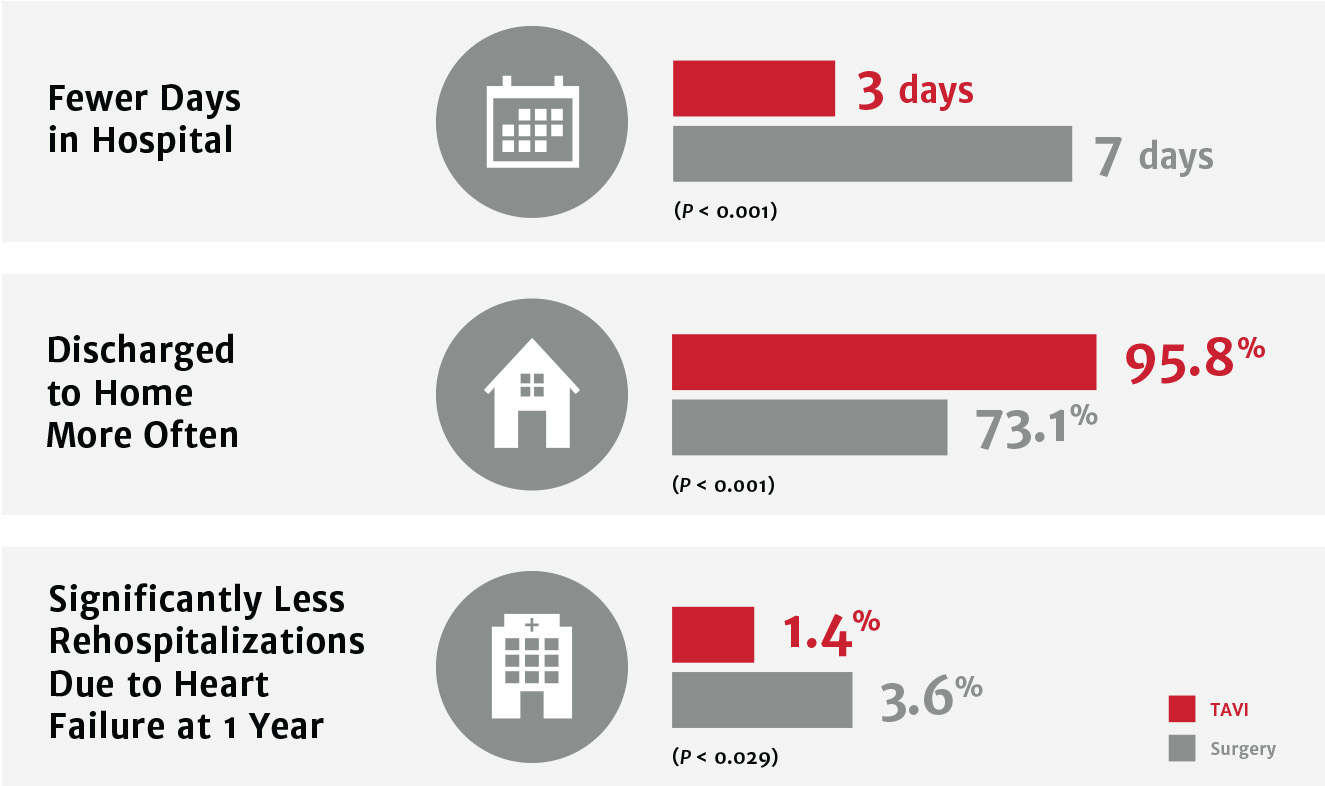Patient Benefits
Patient Benefits
SAPIEN 3 TAVI is proven superior* for low-surgical risk patients across outcomes that matter most to your low-risk patients1,2
TAVI offers many benefits that appeal to symptomatic severe aortic stenosis (AS) patients, independent of surgical risk
When you treat every symptomatic severe AS patient like family, you want them to have a better treatment experience. Help them discover the quality of life benefits from TAVI treatment and resume their everyday lives faster than surgery.1,2
In PARTNER 3 Trials, low-risk patients—and their families—spent less time in hospitals while recovering from the TAVI procedure.2,3

* The PARTNER 3 TRIAL, SAPIEN 3 TAVI proven superior to surgery on the primary endpoint all-cause death, all stroke, and rehabilitation and multiple pre-specified secondary endpoints.
‡ Rehospitalization (valve-related or procedure-related and including heart failure).
** Excludes multiplicity adjustment.
Talking to your patients about the benefits of TAVI can alleviate hesitations about valve replacement
SAVR
TAVI
or
* The PARTNER 3 TRIAL, transcatheter or surgical aortic valve replacement in low-risk patients with aortic stenosis.2
Recommended resources
See all resourcesResources for you
Resources for your patients
Help your patients get back to their daily lives faster
References: 1. Leon MB, Mack MJ. PARTNER 3: transcatheter or surgical aortic valve replacement in low risk patients with aortic stenosis. Presented at ACC 2019; March 2019; New Orleans, LA. 2. Mack MJ, Leon MB, Thourani VH. Transcatheter Aortic-Valve Replacement with a Balloon-Expandable Valve in Low-Risk Patients. N Engl J Med. 2019;380(18):1695-1705. 3. The Partner 3 Trial Clinical Study Report; April 2019. 4. Nishimura RA, Otto CM, Bonow RO, et al. 2017 AHA/ACC focused guidelines of the 2014 AHA/ACC guideline for the management of patients with valvular heart disease: executive summary. J Am Coll Cardial. 2017;35(25):e1159-e1195.